Health Sciences Research
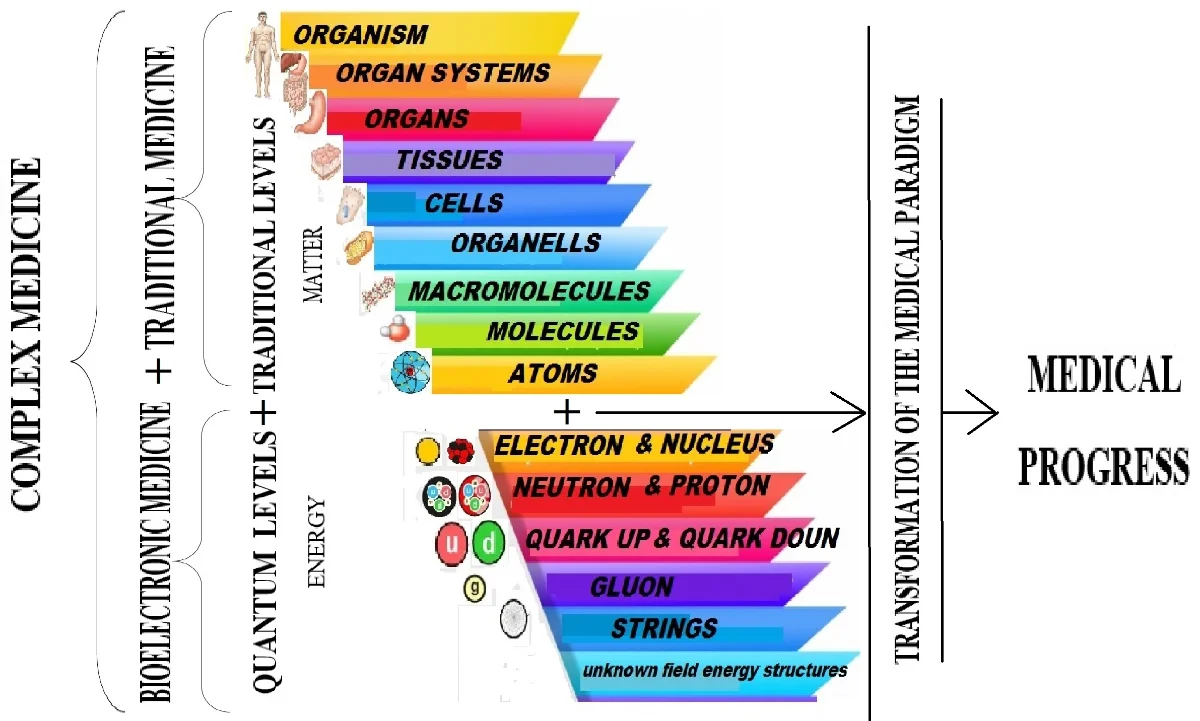
Editor's pick
Research Article
Modern biophysical view of electromagnetic processes of the phenomenon of life of living biological systems as a promising basis for the development of complex medicine: towards the concept of Bioelectronic Medicine
By Ganna Nevoit, Olena Filiunova, Maksim Potyazhenko, Ozar Minser, Inga Arune Bumblyte, Alfonsas Vainoras
The publication of the results of a theoretical study on the conceptualization of Bioelectronic Medicine continues a series of articles on the role of electromagnetic processes in the implementation of the phenomenon of life. The authors, based on modern biophysical fundamental knowledge about the structure and functioning of the human body at the micro level of its structure (nanolevel and deeper) and the concepts of the Magnetoelectrochemical theory of metabolism, developed the main ideological concepts of the scientific direction “Bioelectronic Medicine” as a component for the further development of complex medicine. General scientific methods and theoretical methods were used in this theoretical study. The result of this theoretical research was the extrapolation of modern biophysical fundamental data on the structure of the microcosm of matter to medical knowledge about humans. It is proposed to call the resulting scientific direction the term “Bioelectronic medicine”. A conceptualization of the obtained fundamental ideas was made, three basic concepts and seven main aspects of “Bioelectronic Medicine” were formulated.
December 28, 2023
Public Health
Most cited
Research Article
A portable breast cancer detection system based on smartphone with infrared camera
By Jian Ma, Pengchao Shang, Chen Lu, Safa Meraghni, Khaled Benaggoune, Juan Zuluaga, Noureddine Zerhouni, Christine Devalland, Zeina Al Masry
September 26, 2019
Biomechanics
Most cited
Research Article
Three-dimensional reconstruction of medical images based on 3D slicer
By Xiaolin Zhang, Kexin Zhang, Qiuling Pan, Jincai Chang
June 30, 2019
Public Health
Most cited
Research Article
Brain CT image segmentation based on 3D slicer
By Yuxuan Wang, Han Wang, Keqin Shen, Jincai Chang, Jianzhong Cui
June 30, 2020
Public Health
Most cited
Research Article
Experimental and finite element approach for finding sound absorption coefficient of bio-based foam
By L. Yuvaraj, S. Jeyanthi, Lenin Babu Mailan Chinnapandi
September 30, 2019
Public Health
Jaw Functional Orthopedics and Craniofacial Growth
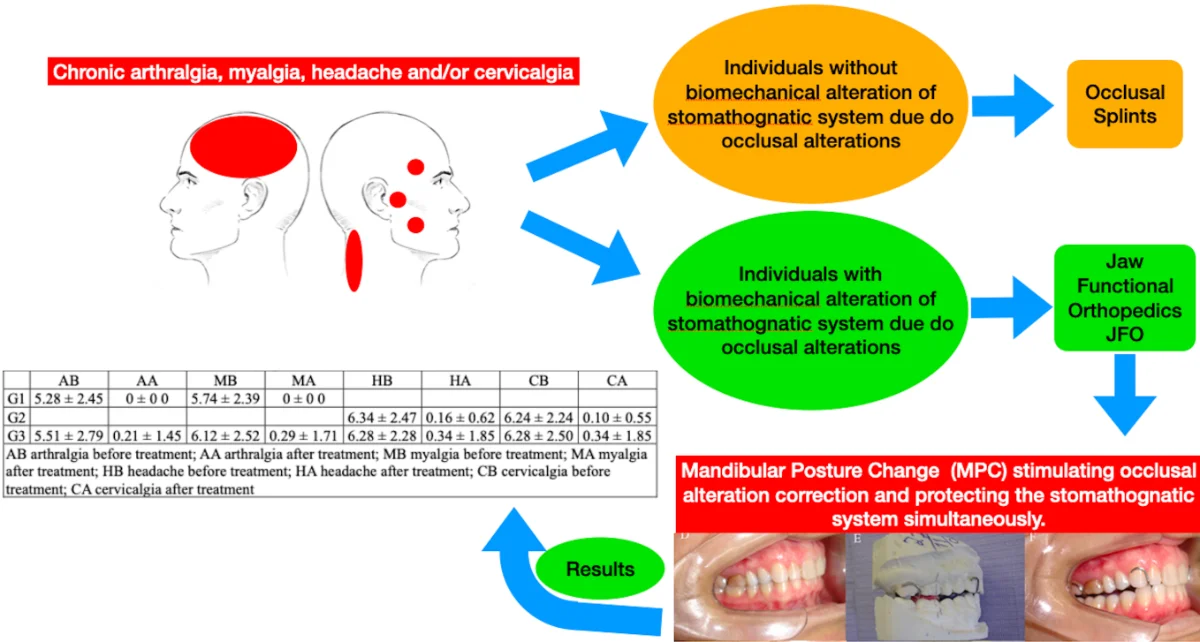
Research Article
Treatment of temporomandibular dysfunction with jaw functional orthopedics: a retrospective study
What are my chances of getting better?” And “How long will it take for the discomfort to improve?” are the two basic questions asked by individuals after they know about the influence of the stomatognathic system (SS) on their discomfort. Despite the biological unpredictability and variation, these individuals need some information. When searching in MEDLINE, some parameters may be found, but there are none about Jaw Functional Orthopedics (JFO). This study sample was composed of 146 patients with TMD and/or headache/neck pains, who were treated with JFO and divided into three groups. Group 1 exclusively with TMD; Group 2 with head and/or neck pain without symptoms of TMD (pain on palpation or movement); and Group 3 with TMD and head/neck pain. The symptoms monitored were arthralgia, and myalgia of the temporal, masseter or suprahyoid muscles, neck pain on movement or palpation, headache and cervicalgia reported. Odontogenic pain and headache originating from other sources (sinusitis, flu, pre-menstrual period, photophobia, hangover, etc.) were excluded from the study. The sample was aligned with the literature relative to prevalence of age and sex. Results showed that JFO treatment was effective in patients of the three groups. There was no statistical difference in mean time for remission among the groups. The results and conclusions should be analyzed with caution since there was no control group, and long term follow up is needed to check the behavior of the symptoms. However, the data from this study suggested that JFO was an efficient tool for treatment of patients with occlusal and biomechanical alterations of the SS, with chronic TMD, head and/or neck pain in a short period of time.
June 21, 2021
Orthopedics
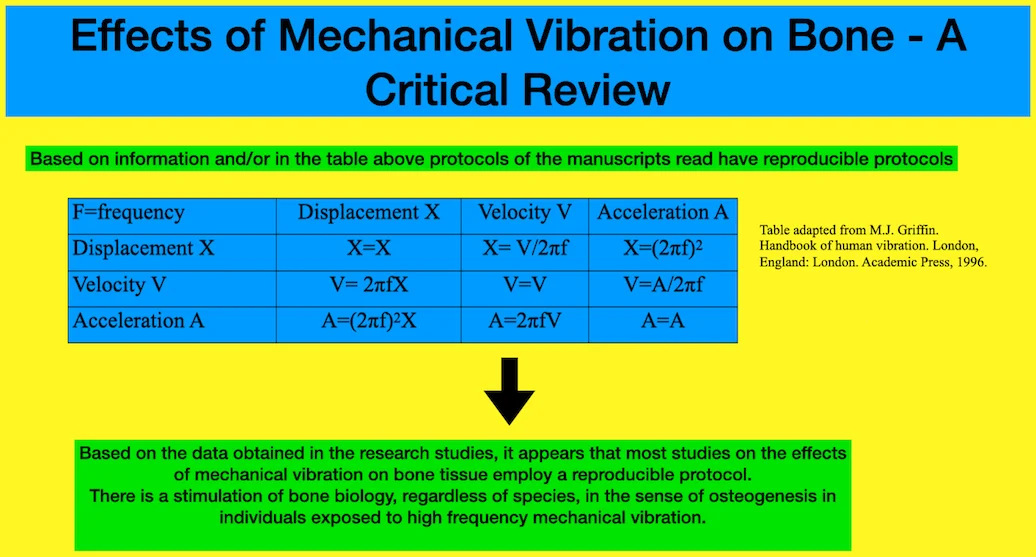
Research Article
Effects of mechanical vibration on bone – a critical review
The benefits of reduced treatment time and comfort for patients undergoing corrective dental treatment with devices gave rise to the creation and modification of long-standing treatment protocols. One of the protocols used for these purposes is mechanical vibration. Objective: This review aimed to study the effects of mechanical vibration on bone. Methods: Portal Capes (periodicos.capes.gov.br) database was searched using the keywords “vibration” and “bone” with no date limit. Based on the title and abstract, the first 50 relevant studies were retrieved. The measured frequencies were between 4 and 150 Hz. Regarding exposure time and the number of applications, the variation is so wide that the average or median would not represent a realistic sample pattern. Results: In the retrieved studies, 41 reported improvements in bone conditions. Research studies show that a reproducible protocol is being applied in most studies on the effects of mechanical vibration on bone tissue. Conclusion: There is stimulation of bone biology, regardless of species, in the sense of osteogenesis in individuals exposed to high frequency mechanical vibration. To improve research protocols on the effects of vibrations on the body, more studies are needed.
November 28, 2022
Orthopedics
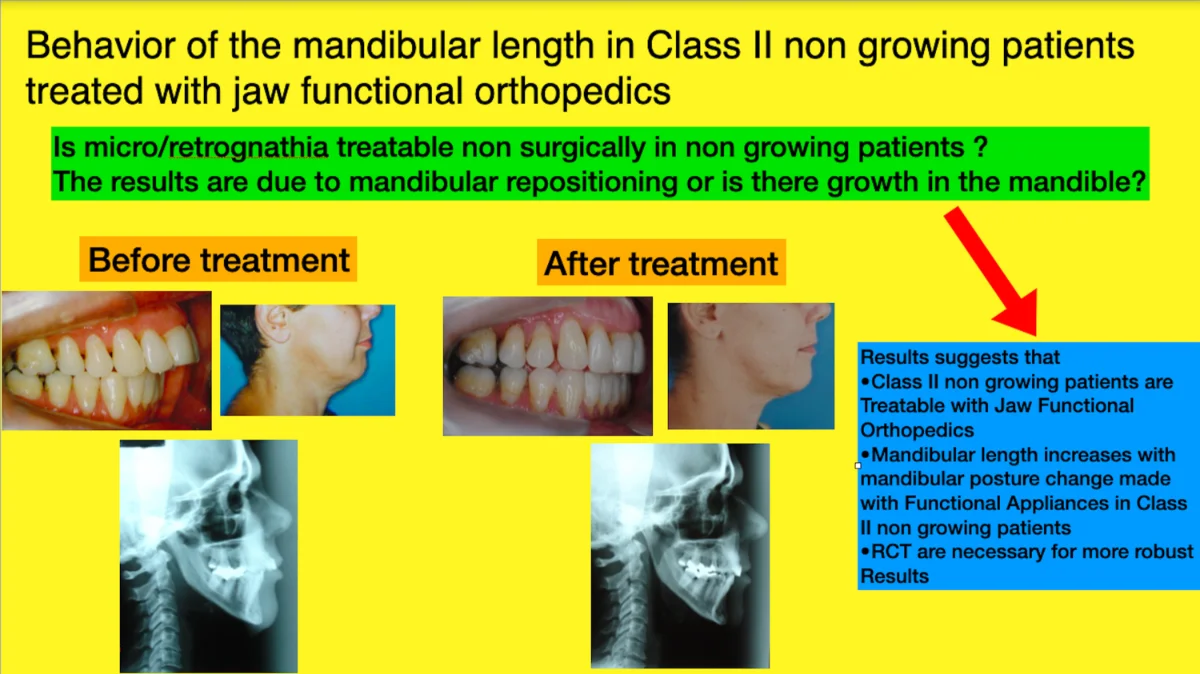
Research Article
Behavior of the mandibular length in class II non-growing patients treated with jaw functional orthopedics
Class II treatment is the leader of seeking for dentofacial correction in offices all around the world due, mainly, to facial esthetics impairment caused by this malocclusion. Mandibular forward repositioned is needed for the majority of this treatment. Jaw Functional Orthopedics (JFO) is a recognized protocol to treat Class II in growing patients. The aim of this investigation is to study the behavior of mandibular length in class II non-growing patients treated with JFO. Distance between Gonion and Mento were measured in lateral teleradiographs at T0 and T1 (from 18 to 21 months of treatment) of non-growing class II patients under treatment with JFO and mandibular supplementary growth was found (P = 0,006). In the sample studied jaw functional orthopedics showed to be efficient to correct the overjet in class II non-growing patients. Mandibular advancement with functional orthopedic appliances promotes a supplementary mandibular growth in non-growing patients. Further studies are necessary for a better comprehension of the subject.
December 27, 2022
Orthopedics
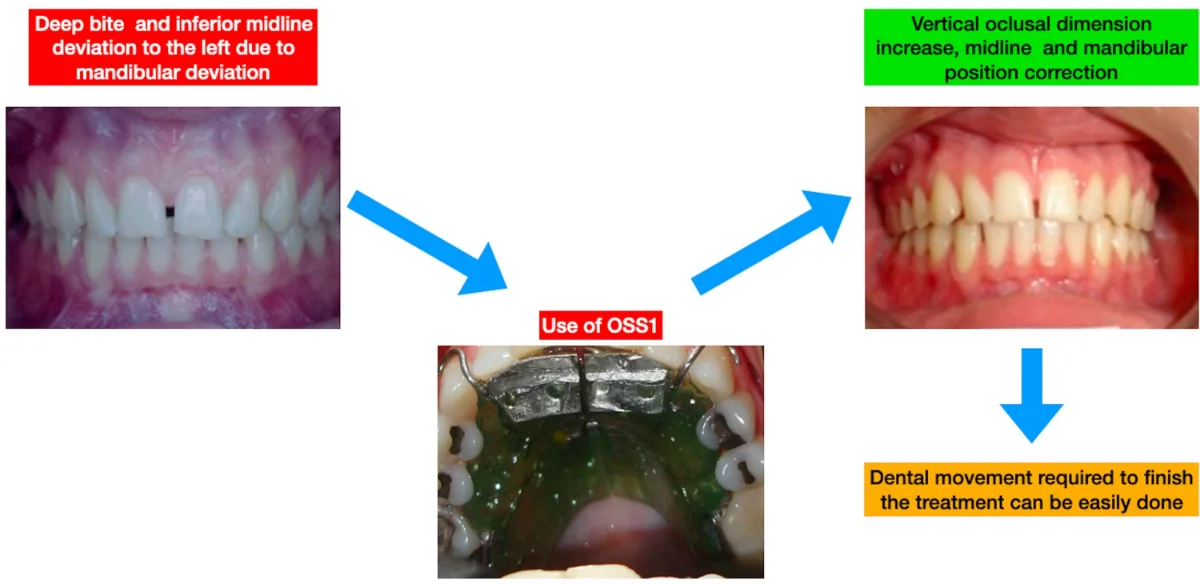
Research Article
Functional orthopedic appliance for vertical dimension increase and mandibular deprogramming ORLANDO SANTIAGO SYSTEM 1 – OSS1. Indications and laboratorial manufacturing
Jaw Functional Orthopedics has efficient tools for treatment of deep bite, but, once they are bioplastic functional appliances, they have a considerable amount of acrylic resulting in volume that interferes with the individual phonetics. Planas had already described a Equiplan attached to a pipe to facilitate the use by the patient. Based on those ideas and in a attempt to improve use conditions of the functional orthopedic appliance, this paper presents the step by step of the manufacturing of an appliance with an Equiplan, used as background activity, or a main appliance, able to increase vertical dimension; used as contention in deep bite treatment; and in individuals with significant occlusal plane alterations, used as a mandibular deprogrammer. The appliance, when properly prescript, has a clinical conduction more efficient than occlusal splints because it does not require adjustment in every session. Its construction do not require articulated casts and can be done in less time in the laboratory.
June 22, 2021
Orthopedics
Jaw Functional Orthopedics and Craniofacial Growth
Original scientific articles presenting information that is new and relevant to jaw functional orthopedics
APC
Free of charge
Best of Theme
Most cited
Research article
September 26, 2019
Study of CO2 emissions from energy consumption in Spanish hospitals
By Justo García-Sanz-Calcedo
Most cited
Research article
August 11, 2021
Positioning algorithm for AGV autonomous driving platform based on artificial neural networks
By Patryk Bałazy, Paweł Gut, Paweł Knap
Most cited
Research article
April 2, 2020
A pilot study on automated quantitative grading of facial functions
By Amira Gaber, Mona F. Taher, Manal Abdel Wahed
Most cited
Research article
January 22, 2021
Design of low-cost wireless noise monitoring sensor unit based on IoT concept
By Maja Anachkova, Simona Domazetovska, Zlatko Petreski, Viktor Gavriloski
You might also like
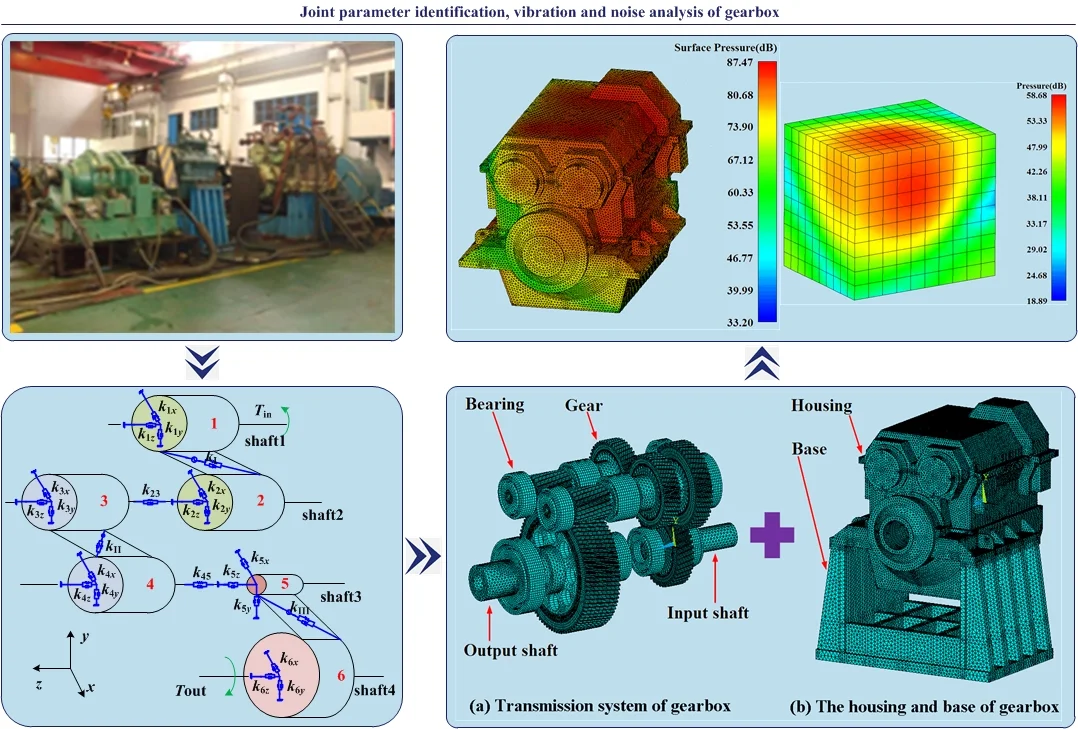
Most downloaded
Research Article
Joint parameter identification, vibration and noise analysis of gearbox
By Tengjiao Lin, Daokun Xie, Quancheng Peng, Songling Guo, Hesheng Lv
A certain type of gearbox is investigated for the problem that the stiffness and damping of bearings are difficult to be accurately determined and then affect the analysis of vibration and noise of gearbox. Firstly, a coupled dynamic lumped parameter model of three-stage helical gear system with consideration of bearing stiffness, bearing damping, and transmission error is established. The modal parameters of gear system are obtained by using the experimental modal analysis method with single-input and multiple-output. The equation for joint parameter identification of gearbox is established which is based on the experimental modal analysis theory and the dynamic lumped parameter model, and subsequently the parameters of the joint are obtained by the least square method. Then, a gear-shaft-bearing- housing coupled dynamic finite element model is developed on the basis of the identified parameters, and after that the dynamic response results of gearbox are solved by using the modal superposition method and compared with the vibration test results. Finally, an acoustic boundary element model of gearbox is established by taking the dynamic response results as the acoustic boundary condition, and the surface sound pressure and radiation noise of gearbox are solved by the boundary element method (BEM), and then the results are compared with the noise test. The results show that the simulation laws and test laws are in good agreement, and thus the method of joint parameter identification, vibration and noise analysis of gearbox is feasible.
May 15, 2019
Public Health
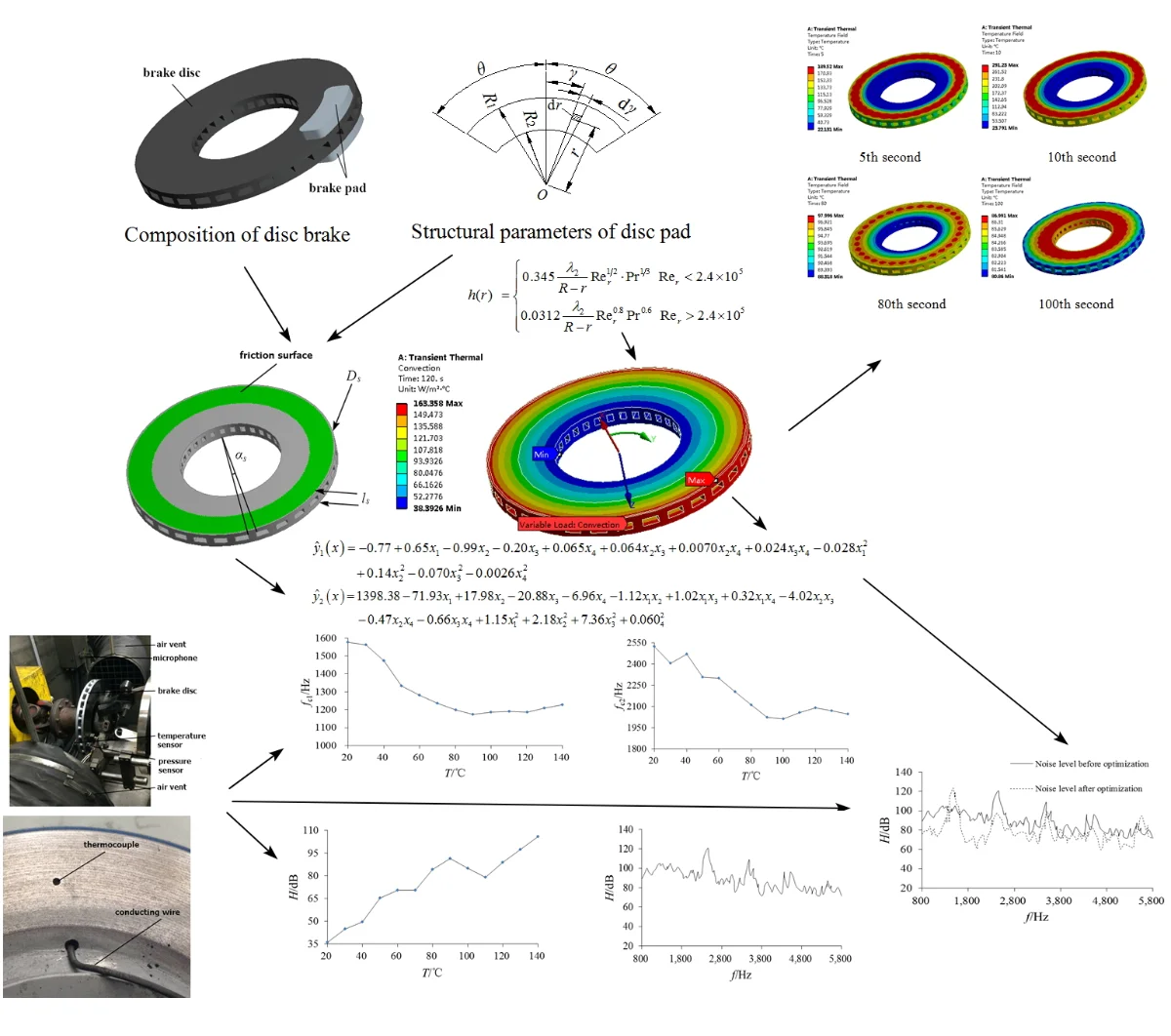
Most downloaded
Research Article
Effect of heat transfer optimization on brake noise characteristics of automotive disc brake
By Sen Zhang, Jian Zhang
Heat effect is one of the most important factors affecting the brake noise level. The finite element model for transient heat transfer analysis of disc brake is established based on heat transfer control equation and heat dissipation boundary conditions of dynamic convection. According to the NVH test and modal calculation, the brake noise characteristics are tested and analyzed. Meanwhile, the heat transfer simulation is verified and shows high accuracy. The discrete data for the response surface function are obtained by the Central Composite Design method with the peak temperature and mass as the target variables. The error of regression function is judged by fitting decision coefficient, correcting decision coefficient and root mean square error. By the optimizing mathematical model, the brake disc temperature peak can be greatly reduced and the heat transfer ability is obviously optimized without mass increasing, the time with temperature above 120 °C can be reduced by 46 %. Through the comparison of brake noise level before and after optimization, it can be known that the noise level can be significantly decreased after structural optimization, except the first order resonance frequency. The optimization result has good social and economic value.
May 15, 2019
Public Health
Design of a high-payload Mecanum-wheel ground vehicle (MWGV)
With the rapid developments of Industry 4.0 and Smart Manufacturing, customized manufacturing has been becoming greatly needed. Meanwhile, the challenge of production automation has become more bigger, especially for the automation of moving, picking, placing and manipulating objects. Many researchers have begun to work on Autonomous Ground Vehicles (AGVs). Most AGVs were utilized to carry middle or small objects, as the high-payload AGVs were rarely developed. This paper focused on the design of a High-Payload Mecanum-Wheel Ground Vehicle (MWGV), which was 1.7 m wide and 2.04 m long. The weight of the vehicle was 740 kg and it was able to carry the payload as its own weight (i.e. around 7,300 N). The safety factor of the structural strength was greater than 1.66 and the safety factor of the axial design was at least 6.24. The vehicle was designed to carry 150-kg weight with a reach of 1.375 m without falling. The design of Mecanum wheels provided great flexibility on movement with small rotational radius. Mathematical descriptions about how Mecanum wheels were controlled was also introduced in this paper. Furthermore, the mechatronics and software integrations were demonstrated. The final experimental results showed the developed MWGV was able to perform the desired movement properly.
Application of coherence analysis study on identification of vehicle noise sources
Structure-Air noise sources in different frequencies were identified based on analysis of frequency and testing of vibration and noise under idling condition, and a method for signal sources priority was developed under identifying the kinds of noise sources. The partial coherence equations of the six input and single output systems were derived based on the theory of coherence. Coefficient of partial coherence of the test data of vibration and noise in vehicle was calculated by using MATLAB. Coherence analysis results show that working engine incentive transferred to the driving cab in low frequency range caused structure noise, engine RH mounting is the main noise source; The noise in middle frequency range is caused by the coupling effects of vibration of engine left mounting and noise of the engine compartment to the driving cab, between which left hanging mount vibration affected more; Engine compartment noise in high frequency leaked through the air to the cab, engine noise is the main source of noise inside.